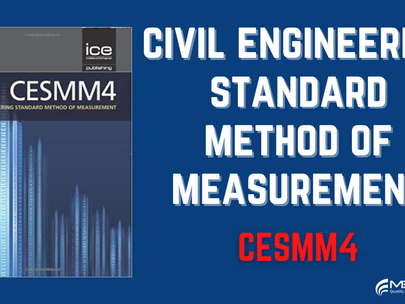CESMM stands for Civil Engineering Standard Methods of Measurement and is a standard which incorporates rules and regulations for measuring elements of major civil engineering projects. The first edition was published in 1976 but there have been numerous versions and updates throughout the years to ensure the information is still relevant to the present day and to ensure the standards do not get left behind current building methods and innovation. The most recent and up to date version is CESMM4 which was published in the April of 2012.
Like other methods of measurement such as NRM2, CESMM4 can be used across a range of standard construction contracts, including FIDIC & NEC. The difference between NRM2 and CESMM4 however, is that generally NRM2 gives more emphasis to detail, where-as CESMM4 tries to take a more inclusive approach to the measurement process. This is due to the nature of the work that it has been developed to guide – Civil Engineering. Building work comprises of many different trade types versus Civil Engineering works that generally consist of large quantities of a comparatively small range of items.
The guidance CESMM provides sets out procedures for the preparation of a bill of quantities for pricing and for the expression and measurement of quantities of work. Once a BOQ has been built, it permits tenders to be prepared efficiently and as such can be used to value and monitor work completed once the contract has been awarded.
The classification system in CESMM includes 26 main classes of work commonly undertaken on civil engineering projects and includes definitions of how work is divided into items, the method for describing items, the units to be adopted and the method of measurement. All extremely useful tools for Quantity surveyors and Construction Professional during the take-off and tender process.
Some of the other advantages it provides includes:
- Flexibility for choosing the method of execution of the project works since the cost of the method and other temporary works would be allocated under the method related charges.
- It allows for the pricing of all temporary works which do not form part of the final construction.
- It can help to provide clarity on the difference in prices between tenders since the basis of each tender and the items included is the same for each and clearly defined through the BoQ.
- CESMM continues to update its versions to accommodate with the new technologies that appear in the world of civil engineering.
- The use of the coding system to identify the separate category items can be very helpful when integrating the CESMM into project management software. The coding system also allows CESMM to include extra work items not mentioned in a certain category by making coding iterations.
- CESMM is considered flexible and simple to use which is useful in the case of dealing with variations which are inevitable on a construction project.











